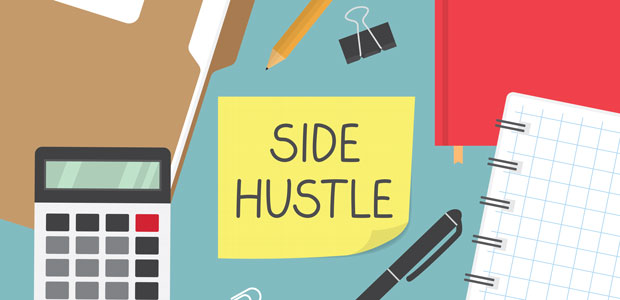
How to start a side hustle
All across Britain, the self-starter movement is gathering momentum with people starting side hustles, their own small business or turning their passion project into an income. Research done by OnePoll in collaboration with Mettle last year found that passion (35%), ambition (34%) and hobbies (33%) are the most popular reasons for starting a side hustle. In fact, almost two thirds (64%) say they regret not starting their side hustle sooner.
But where do you even start when it comes to getting your side hustle going? Here, you’ll find some tips on everything you need to know about starting your side hustle, from coming up with a name and building your brand to figuring out if you need a separate business banking account.
Check your employment contract first
Before you get stuck into starting your side hustle, you need to check your employment contract to see if you’re allowed to start or work on another business. You want to make sure you don’t land into any hot water – or potentially lose your full-time job.
Getting started
Once that’s sorted, it’s time to get started with making your side hustle a reality!
There are loads of different areas you can start a side hustle in, from teaching or coaching, selling homemade items, to affiliate marketing. Speak to friends and family to bounce ideas around, or join a Facebook group with other side hustlers to get some inspiration and help.
Once you have an idea, you’re going to need a name. Your name is how customers will identify your brand and you'll want it to be unique to you. Do some research into what other businesses in your space are called so that you can make sure that you stand out.
Showing the world who you are
So you’ve cleared it with work and you’ve got an idea and a name. It’s time to get up and running.
You need to make sure that people can find your business. One way to do that is with a website. It’s a great way of showing customers what you’re all about.
When it comes to building a website, you could use a website builder, such as Wix, WordPress or Squarespace – all have really intuitive interfaces and can be customised to an intricate level. Services vary between platforms so do your due diligence before deciding which one is right for you.
You could also hire a freelance web designer through a platform like Fivver. This would give you a lot of flexibility and more ownership over your website, but it will come with a price tag.
If a website isn’t the route for you and you want to start smaller instead, then social media is a great way to get your name out there. More and more people are finding success through social media alone and you can now sell through Instagram or Facebook without having to build or maintain a website.
Tools of the trade
No matter what your side hustle is, technology is an important part. It’s there to help you automate processes, stay on top of your finances and make sure you’re hitting all your deadlines.
From finance options – like Quickbooks and FreeAgent – to marketing, such as Hootsuite and MailChimp – there’s an option out there that’s right for you.
Keep in mind that a lot of tools will either have a free option or offer a free trial. It’s always good to test something out first before you put any money behind it.
Why you might need a separate business account
With your side hustle up and running, you now need to think about finances. The thought of having a personal account and a separate business account may seem daunting, but it can make things a lot simpler.
A separate business account can help you keep track of your business finances and it also allows you to keep an eye on things like cash flow and invoices. Some business accounts also integrate with bookkeeping software that will come in handy if you have to submit any tax.
Just note that as a sole trader, it’s not a requirement to have a business account. But if you have a limited company, you need to have a separate account so that you can legally hold the money as a separate entity to your personal finances.
Understanding tax
Last but certainly not least, you need to think about tax.
When it comes to tax for your side hustle it all depends on how much you’re earning. As a sole trader, HMRC recommends you register for tax as soon as possible, but at the latest, you must register by 5 October in your second tax year. You have a £1,000 tax-free trading allowance, so you won’t need to submit a Self Assessment return if your income is less than that in one tax year.
If it’s your first time submitting a Self Assessment form, it can take up to 10 business days via post to get the information you need from HMRC to log in to your account.
The Self Assessment tax deadline has been moved for the 2020/21 tax year to give you more time to pay. You now have till 28 February to submit without fines for late submission or payment, but interest is still payable so try to submit as soon as possible.
Starting your own side hustle might seem daunting at first but with some passion, planning and commitment you can turn your dreams into reality.
To learn about a Mettle account, click here.

